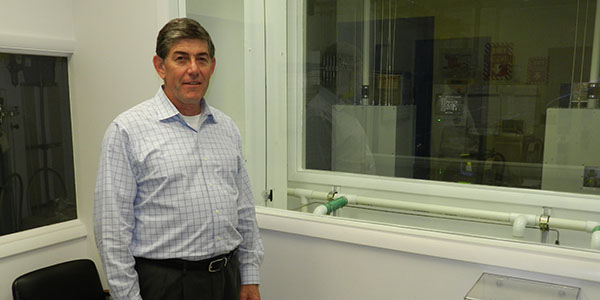
Tucked away just off Route 9A in Elmsford, Hypres Inc., one of the world”™s leading developers and manufacturers of digital superconductor chips, is no IBM.
Despite keeping a low profile and operating with limited resources compared with the tech giants that now reside in the state capitol region, researchers at Hypres are in the process of developing a prototype for a portable Magnetic Resonance Imaging, or MRI, system that could revolutionize what represents a $2 billion industry in the U.S. alone.
“Every time you have an innovation you run into skeptics,” said Hypres President and CEO Richard Hitt. “But right now we”™re the guys with these new ideas. I”™m not even a physicist, but I”™ve been here long enough to know this will work.”
The technology could represent a major breakthrough for Hypres, which was founded in 1983 by a group of former IBM Corp. engineers who worked on the company”™s superconducting and supercomputing initiative.
While a semiconductor, which forms the foundation of most modern consumer electronics, has more electrical resistance than a conductor but less than an insulator, a superconductor has no resistance to the flow of electricity ”“ making digital superconductor electronics the world”™s fastest integrated circuits.
The superconductor property has enabled Hypres to operate its systems at frequency speeds of up to 40 gigahertz (GHz) in the field and beyond 100 GHz in the lab setting.
In comparison, the highest processor speed Apple Inc.”™s newest model MacBook Pro can be configured to is 3.6 GHz.
The catch, Hitt said, is that the digital superconductor chips must be cooled to 4.5 Kelvin, roughly equivalent to negative 450 degrees Fahrenheit, in order to function.
“These are hard to integrate into systems,” Hitt said. “You can find dozens and dozens of things where digital superconductor chips can improve systems, but the question is, is it a good value proposition?”
In 2000, Hypres, which engineers and manufactures all of its products in Elmsford, began developing its superconductor technology to be applied to the wireless communications market, producing high performance, reconfigurable broadband receivers, transmitters and transceivers for commercial and military applications.
Then, in 2005, Hitt said he challenged the company”™s researchers to develop a solution that could be applied to MRI systems, which also operate using radio frequency signals.
“And it spawned from there,” Hitt said.
Elie K. Track, senior partner of Hypres, said the development of a more compact, portable MRI system “has been, for a long time, the holy grail.”
“Improvements to MRI systems always came from more powerful magnets,” he said, which meant MRI systems became physically much larger, more difficult to install and impossible to move from room to room.
Hypres is attempting to develop a system that substitutes a much more powerful radio frequency receiver for the larger magnets, Track said.
“We”™ve talked to experts in the field ”¦ and the excitement was tremendous,” he said.
While the company looks to develop a prototype for a portable MRI system, Hypres has also worked with medical researchers at Yale University to develop technology that could be used to upgrade existing MRI systems.
With the help of U.S. Sen. Kirsten Gillibrand and Rep. Nita Lowey, Hypres secured a $146,000 phase I federal grant from the U.S. Department of Health and Human Services through the agency”™s Small Business Innovation Research (SBIR) grants program to develop a retrofit module for MRI systems that incorporates digital superconductor circuits to provide higher resolution images and faster scan times.
Now, Hitt said, Hypres is seeking a phase II SBIR grant, which can reach a maximum of $1 million, in order to further the development of the company”™s MRI systems.
He declined to elaborate on the total cost of engineering the prototypes, but estimated they would take “a couple more years” to develop.
“We think we have a very compelling product and design ”¦ but we have lots more experimentation to do,” Hitt said.
Roughly 80 million MRI scans are performed on 24,000 systems worldwide each year, Hypres estimates.
Hitt said a typical MRI system will cost a hospital $1.5 million to purchase, another $1.5 million to install, and $300,000 in annual operating costs, with a lifetime of about 10 years.
Much of those costs, Hitt said, are the result of “remodeling” that becomes necessary in order to transport an MRI system to its final home.
“We have to pick and choose our targets ”¦ but the economics of the MRI make us a good option,” Hitt said. “We can come along with our little chip and make some big improvements to these machines.”
“Anything you can take through the front door is cheaper than knocking the wall down,” he continued. “You”™re basically looking for a way to take the machine to the patient, instead of taking the patient to the machine,” which Hitt said could have major implications for the military as well as private medical providers.




















